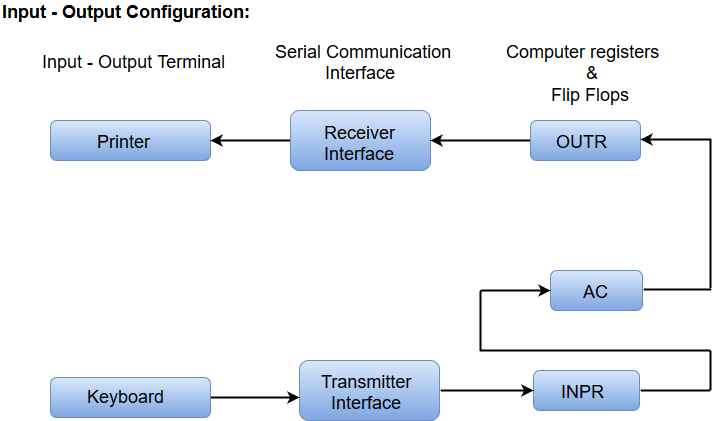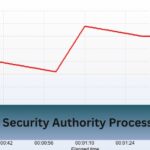I remember how quickly my system processes commands, thanks to the constant fetching, decoding, and executing of instructions. It’s fascinating how each CPU cycle helps everything from opening apps to playing videos run smoothly.
A CPU cycle is the process where the CPU fetches, decodes, executes, and stores instructions, powering your computer’s tasks and ensuring smooth performance.
Curious how your computer works so fast? It’s all thanks to the CPU cycle, the powerhouse behind every click, task, and action!
Table of Contents
Defining the CPU Cycle
A CPU cycle refers to the sequence of operations that the CPU performs to execute an instruction. This cycle is the fundamental operational unit of a CPU, enabling it to process data, execute programs, and respond to user commands.

The term “cycle” is closely tied to the clock speed of the CPU, which is measured in hertz (Hz). Clock speed determines how many cycles the CPU can perform per second. For instance, a 3.5 GHz processor can theoretically perform 3.5 billion cycles per second.
Components of a CPU Cycle
- Fetch: Retrieving the instruction from memory.
- Decode: Translating the instruction into actionable steps.
- Execute: Carrying out the required operation.
- Store: Saving the results for further processing or storage.
Read Also: I/O Bound Vs Cpu Bound – Boost Your System’s Efficiency Today!
The Four Stages of a CPU Cycle
1. Fetch:
In the fetch stage, the CPU retrieves an instruction from the computer’s memory. This instruction is stored at a specific memory address, which the CPU accesses using a component called the Program Counter (PC). The PC keeps track of the next instruction to be executed.
2. Decode:
Once the instruction is fetched, the CPU enters the decode phase. Here, the fetched instruction is translated into a format that the CPU’s control unit can understand. The CPU uses an Instruction Decoder to break down the instruction into its components, such as the operation to be performed and the data to be manipulated.
3. Execute:
The execute phase is where the CPU carries out the operation specified by the instruction. This could involve arithmetic calculations, logical comparisons, or data transfers. The Arithmetic Logic Unit (ALU) plays a key role in performing these operations.
4. Store (Optional):
In some cases, the results of the execution need to be saved for future use. During the store phase, the CPU writes the result back to memory or to a register—a small, fast storage location within the CPU.
Factors Affecting CPU Cycles
- Clock Speed: Measured in GHz, higher clock speeds result in faster execution of cycles.
- Cache Memory: Reduces delays by storing frequently accessed data closer to the CPU.
- Number of Cores: Multicore processors can handle multiple instructions simultaneously.
The Role of Clock Speed in CPU Cycles
The efficiency of CPU cycles is determined by the clock speed of the processor. Measured in GHz (gigahertz), the clock speed indicates how many cycles the CPU can perform per second. For example:

- A CPU with a clock speed of 2.5 GHz can execute 2.5 billion cycles per second.
- A faster clock speed means the CPU can process more instructions in less time, leading to better performance.
However, higher clock speeds also generate more heat and consume more power, which is why modern CPUs incorporate features like multi-core architectures and hyper-threading to enhance performance without solely relying on clock speed.
How CPU Cycles Affect Performance?
Instruction Complexity:
Simple instructions take fewer cycles to execute, while complex instructions may require multiple cycles. For example, moving data from one register to another is quicker than performing a floating-point division.
Pipelining:
Modern CPUs use a technique called pipelining to improve efficiency. Pipelining allows the CPU to work on multiple instructions simultaneously by overlapping the stages of different cycles. For instance, while one instruction is being decoded, another can be fetched.
Cache Memory:
The availability of cache memory significantly reduces the time required to fetch instructions and data, thereby optimizing CPU cycles. Cache is a high-speed memory located closer to the CPU, designed to store frequently accessed data and instructions.
Multi-Core Processing:
In multi-core processors, each core can handle its own set of cycles independently. This parallel processing capability enhances performance, especially for tasks that can be divided into smaller, simultaneous operations.
Read Also: Is Cod Cpu Or Gpu Intensive – Find Out Now!
Challenges in Optimizing CPU Cycles
- Thermal Management: As CPUs execute billions of cycles per second, they generate significant heat. Effective cooling solutions are essential to maintain performance and prevent overheating.
- Instruction Bottlenecks: Complex instructions or poorly optimized software can lead to bottlenecks, where certain stages of the cycle take longer, slowing overall performance.
- Power Consumption: Faster CPU cycles consume more power, which can impact battery life in portable devices and increase operational costs in data centers.
Modern CPU Technologies and Optimizations

- Pipelining: Pipelining splits the CPU cycle into overlapping stages, enabling multiple instructions to be processed simultaneously.
- Multithreading and Parallel Processing: These techniques allow CPUs to execute multiple tasks concurrently, boosting efficiency.
- Advances in Microarchitecture: Smaller transistors and optimized layouts enable faster and more energy-efficient CPUs.
Frequently Asked Questions:
1. What is CPU cycle time?
CPU cycle time is the amount of time it takes for the CPU to complete one cycle of its operation (fetch, decode, execute). It is inversely related to clock speed.
2. What is execution cycle?
The execution cycle refers to the phase in the CPU cycle where the instruction, after being fetched and decoded, is executed.
3. How long is 1 CPU cycle?
The length of 1 CPU cycle depends on the processor’s clock speed. For example, a 3 GHz processor has a cycle time of approximately 0.33 nanoseconds (1 second ÷ 3 billion cycles). The higher the clock speed, the shorter the cycle time.
4. How to increase CPU cycles?
To increase CPU cycles, you can overclock the processor, optimize software, or upgrade to a faster CPU.
5. What is CPU instruction per cycle?
CPU instructions per cycle (IPC) refers to the number of instructions a CPU can execute in a single clock cycle.
Conclusion:
A CPU cycle is the sequence where the CPU retrieves, decodes, executes, and stores instructions, driving the computer’s operations and maintaining smooth performance.
Related Posts:










